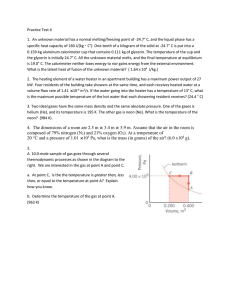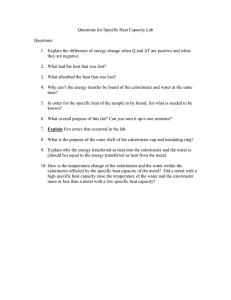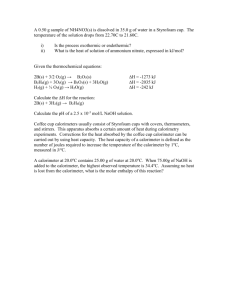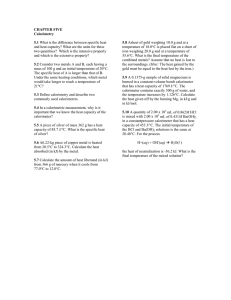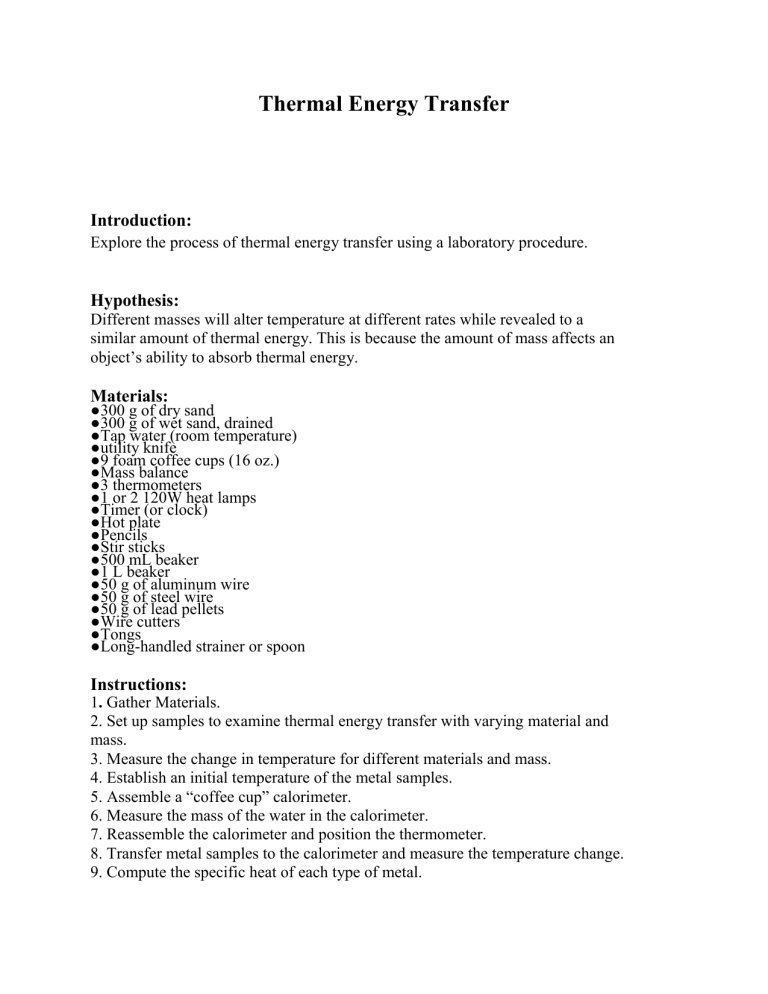
Thermal Energy Transfer Introduction: Explore the process of thermal energy transfer using a laboratory procedure. Hypothesis: Different masses will alter temperature at different rates while revealed to a similar amount of thermal energy. This is because the amount of mass affects an object’s ability to absorb thermal energy. Materials: ●300 g of dry sand ●300 g of wet sand, drained ●Tap water (room temperature) ●utility knife ●9 foam coffee cups (16 oz.) ●Mass balance ●3 thermometers ●1 or 2 120W heat lamps ●Timer (or clock) ●Hot plate ●Pencils ●Stir sticks ●500 mL beaker ●1 L beaker ●50 g of aluminum wire ●50 g of steel wire ●50 g of lead pellets ●Wire cutters ●Tongs ●Long-handled strainer or spoon Instructions: 1. Gather Materials. 2. Set up samples to examine thermal energy transfer with varying material and mass. 3. Measure the change in temperature for different materials and mass. 4. Establish an initial temperature of the metal samples. 5. Assemble a “coffee cup” calorimeter. 6. Measure the mass of the water in the calorimeter. 7. Reassemble the calorimeter and position the thermometer. 8. Transfer metal samples to the calorimeter and measure the temperature change. 9. Compute the specific heat of each type of metal. Results: The temperature of the bar did not change. The temperature of the water in both cups stayed the same. Conclusion: The temperature of the bar got warmer on the side that started cool. The hot water temperature decreased, and the cool water temperature increased. The heat from hot water Cup A transferred to the cooler water in cup B, which raised the temperature in Cup B, and decreased the temperature in Cup A.
